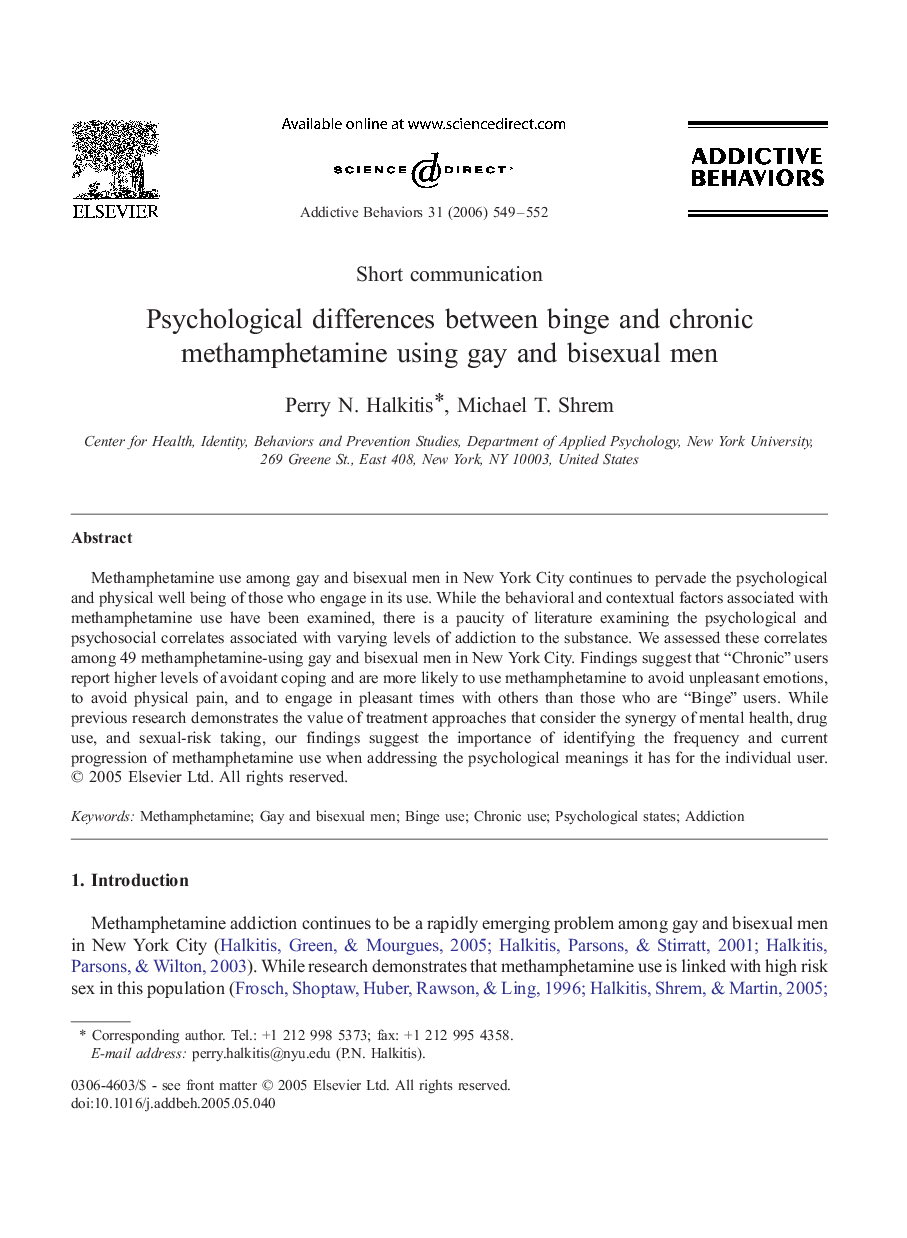| Article ID | Journal | Published Year | Pages | File Type |
|---|---|---|---|---|
| 900567 | Addictive Behaviors | 2006 | 4 Pages |
Methamphetamine use among gay and bisexual men in New York City continues to pervade the psychological and physical well being of those who engage in its use. While the behavioral and contextual factors associated with methamphetamine use have been examined, there is a paucity of literature examining the psychological and psychosocial correlates associated with varying levels of addiction to the substance. We assessed these correlates among 49 methamphetamine-using gay and bisexual men in New York City. Findings suggest that “Chronic” users report higher levels of avoidant coping and are more likely to use methamphetamine to avoid unpleasant emotions, to avoid physical pain, and to engage in pleasant times with others than those who are “Binge” users. While previous research demonstrates the value of treatment approaches that consider the synergy of mental health, drug use, and sexual-risk taking, our findings suggest the importance of identifying the frequency and current progression of methamphetamine use when addressing the psychological meanings it has for the individual user.
